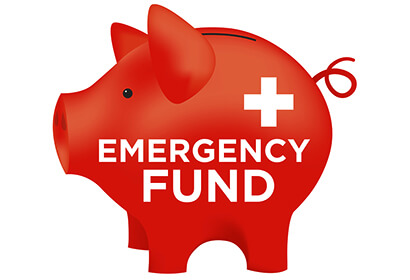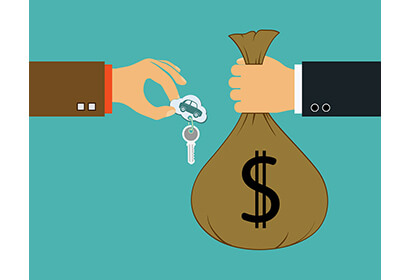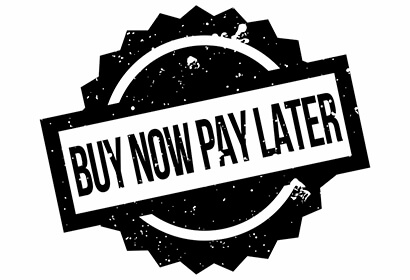
How does leasing a vehicle work? Many consumers know about vehicle leasing and how it can have lower monthly payments than buying, but many people don’t really get what it means to lease, nor do they fully understand how it works, including the differences. If you are wondering how to lease a vehicle, you aren’t alone. Vehicle leasing is just another method of financing, which is much cheaper than the alternatives.
Leasing a vehicle is different from purchasing in that you are paying for the use of a vehicle or truck instead of the full value of the vehicle. Usage includes its depreciation value, excessive wear and tear, and any excessive mileage put on the vehicle while you are leasing it. Much like traditional financing, though, you do have to pay an interest rate on the price of the vehicle, because the leasing company buys the vehicle from a dealer before turning around and leasing it to the customer.
Aside from lower monthly payments, leasing is a good option for those who enjoy getting a new vehicle every few years, since once the lease is up, you can turn it in and get a new car. Even though there are many benefits to leasing, one must be aware of the risks. There are hidden dealer tactics to know about so they can be avoided. Often dealers will try to draw out the vehicle lease deals so that you are too tired to say no, or push you to lease right away, or tell you that something could get in the way of leasing that particular vehicle in the future, persuading you to act now.
Read on to see other tactics dealers use as well as some things to keep in mind when leasing a vehicle.
Vehicle Leasing Tricks

1. Using Your Lack of Information against You
Salespeople love customers who don’t know what they’re getting into. It’s hard to negotiate a good price when you have no idea what the range should be. Before heading to the dealership, do your homework.
2. Focusing Solely on the Monthly Payment
Salespeople will often ask lessees the largest amount that they can afford per month. They will then use that amount to drag out the loan for as long as possible to charge you the most, while making it appear cheaper. They will show you vehicles and trucks in a higher price bracket that will often be more than you want to spend, while confidently encouraging that you can certainly afford that higher price.
3. The Trade-In
Many dealers will make you think you are getting a good deal on your trade while ripping you off on the vehicle you intend to lease. Dealers know that many potential lessees are focused on the trade-in value of their vehicle, and they hone in on that and lie to get you more willing to act.
4. Lying by Omission
A typical tactic is avoidance. Let’s say you are checking out a vehicle in their lot and you see that a door has a little crack in the paint and is also off center, appearing that it has been in an accident. If you ask the salesman about it, he might say something about being able to fix it without actually addressing the actual problem. Do some homework on these sorts of incidents before stepping foot on the lot.
5. Single Lump Sum Payments

Some lessees will decide on a single payment lease, allowing them to pay up front as opposed to making those monthly payments. By doing this, you can lower the rate, saving money down the road and get true vehicle lease deals; however, this is rare. Some dealers will scam you by charging a normal lease rate thereby nullifying the savings. Do your own calculations and homework so this doesn’t happen.
These are just a few of the ways you can get ripped off while leasing. Always spend time looking into known scams and things that can get in your way before signing anything or even speaking to a salesperson.
Poor Credit History – Myths vs Reality
Even if you have bad credit, it is still possible to lease a vehicle. There are a few things to keep in mind, though. Before we get into that, let’s take a look at what causes a bad credit score. A credit score is calculated by looking at your credit history, and while there are many credit bureaus out there, FICO is the one that is most often looked at. FICO scores range from 300-850. A score under 540 is typically at risk of not being able to get an auto loan, and on average 650 and above credit score will get you a loan to lease a car. A score of 740 would be ideal, but not mandatory, which would be likely to get a better monthly lease payment.

Be sure you look into your own credit score instead of believing what someone tells you. Even if you have a ruined score, you still have the chance of getting that loan, one that may be better than someone with the same score or no credit history whatsoever. Don’t get discouraged if you find out your score is low.
There can be some benefits to leasing with a low credit score including being able to get your dream vehicle once you are approved for the lease. Even if your credit score is exceptionally low, your lease will come with a warranty so you don’t have to pay for any repairs. Perhaps the best benefit is that by making a payment on time each month, you are helping to improve your score.
Tips for Leasing with Bad Credit
– Check with a bank or credit union before you head to a lender.
In the meantime, shop around. You may want to accept the first offer you receive from a dealership, but to get the best price, it is important that you keep looking around and comparing quotes.
– Think about Taking over a Lease
You can take over a lease contract from another person who isn’t able to make their payments anymore. You still need to get approval from the original financer, but getting approved is usually easier, especially if you can’t qualify on your own.
– Find a Co-signer
If you cannot qualify for a lease, ask a family member or close friend to be a co-signer. This means they agree to take responsibility for the payments if you are unable to make them, making the dealers more willing to allow you to lease.
How Dealers Make Money on Leasing
To make sure you are getting the best possible deal, you need to understand how these dealers make their money on a lease.

Many people believe that vehicle dealers are the ones leasing the vehicle when in fact that is false. Leasing, again, is just another way to finance, meaning that you are actually dealing with a leasing company or a bank. Often, potential lessees don’t know leasing lingo, making it a confusing process. Once you understand how it works, it is pretty straightforward, but for those who don’t understand, the confusion can end up costing you a lot of money.
With a lease, buyers usually will focus on a monthly payment instead of the overall vehicle price. It is just as imperative that you negotiate the price with a lease as it is when buying a vehicle, but many don’t take this into account. This allows the dealer to raise the price much more than if you were buying it, playing off of your ignorance. While you are stuck on monthly payments, you don’t notice the price of the vehicle being far too high. Some dealers will even lease it at full MSRP and make a profit of a few thousand dollars–just because you didn’t pay attention to the full amount.
What is out of Pocket When Auto Leasing?
There are a few fees you will have to pay when leasing a vehicle. These are often what are known as closing costs and include:
- Acquisition fees
- Drive-out charges
- First month’s payment
- Security deposit
- State, county, or city fees
Also, you will often be required to come up with a down payment out of pocket. When settling on the details of your lease, again, you will be tempted to only focus on the monthly payment, as that is what is enticing about leasing a vehicle. But you do need to pay attention to what you’re really getting into, to ensure you are not being charged the full price of the vehicle. While a down payment can help reduce monthly fees, be sure you know the total vehicle cost.
However, do not put too much money down. The down payment will obviously go toward getting a good bit of the lease paid for, but getting all that money together up front isn’t always the best thing to do. For instance, if the vehicle gets stolen or totaled during the first part of the lease, the leasing company would be reimbursed but you will likely be left without a vehicle. You would also lose the down payment; therefore, be sure you are mindful of just how much you are paying out of pocket for that down payment, no matter how tempting.
Beware of Dealers That Mark up the Lease Acquisition Fee
As you are learning, there are a number of things to worry about to ensure you aren’t getting a sour deal when leasing. One of these aspects is the lease acquisition fee, also known as the origination fee. This fee covers the lender’s initial costs–or so they would like you to believe. Truly, it is just another source of profit. These fees often begin at $350 and can range as high as $1,000 for higher end models. If your salesperson is writing the lease, make sure they aren’t charging you a high lease acquisition fee.
Leasing companies will often allow salespeople to hike up that fee and allow them to keep the profit earned. The way to avoid this is to shop around for best vehicle lease deals with different dealers and keep an eye on the fee. See if they are all charging around the same amount, and if not, it is likely that it has been marked up. As always, do your homework to save yourself money and a headache.
Good Example of a Bad Vehicle Leasing Experience
The following is an example of a bad leasing experience. Marc Frons, an experienced business journalist, wanted to lease a luxury vehicle, the 2012 Infiniti G37x Sedan. He was offered a lease of $399 per month for 39 months with no down payment. He went online and did his research, looking at reviews for different dealers who had this vehicle for lease.

Marc Frons Credit Earl Wilson/The New York Times
Marc called a few dealers, but they all tried to coerce him into coming in to talk about it instead of doing so over the phone. So instead of going in, he went on the internet again. Using an online vehicle lease calculator, he saw that he could save around 15% off the sales price of the vehicle. All of the great deals were far from his home so he settled for the convenience of a dealer near his office.
He was quoted a much higher price than he saw online and tried to negotiate it down, but the salesman wouldn’t come down close enough to where he wanted. Marc was then bribed with floor mats and free oil changes. Eventually he gave in and took on the lease of $420 per month instead of $399 as he had seen online. He also laid down an unnecessary $500 down payment.
Marc says his biggest error was focusing on the monthly payment instead of the bigger picture, which as noted, is a bad idea. Doing so neglects consideration of all other fees and expenditures, including the fee if you decided to keep the vehicle at the end of the lease–all important factors when considering auto leasing. In retrospect, he agrees that it is very important to pay attention to the full purchase price and not just the monthly amounts. Marc also didn’t take into consideration all of the aforementioned closing costs. He recommends getting all of the numbers from the dealer, as his costs ended up being around $1,993, which he was not aware of, but he had already signed.
Pay attention! Ask for every single item you will be paying for–all of the numbers–right away to avoid spending way more than you bargained for like Marc.
Pros and Cons of Leasing a Vehicle
Let’s take a look at some of the pros and cons of leasing a vehicle:
- Usually no down payment is needed, and if there is, it is low
- Opportunity to drive a higher end vehicle than you could afford to buy
- Repairs are fully covered, and you can get a new vehicle every few years
- Leasing costs more in the long run due to higher financing charges
- Limit on the amount of miles per year; exceeding the limit imposes an extra charge at the end of the lease
- Entire vehicle must be kept in good condition; unreasonable excessive wear and tear results in an extra charge at the end of the lease
- Getting out of a lease before it expires requires early termination fees
Future vs. Current Value
Money factor, Residual Value, & Down-Payment-Double-Cross
The residual value of a vehicle is a giant factor in leasing, making up the biggest aspect of your monthly payment. A residual value is just how much the vehicle is worth at the end of the lease, or the buyout price if you should decide to keep the vehicle at the end of the lease. Shown as a dollar amount, a residual value is calculated by the MSRP. This is the current overall cost of the vehicle.
Leasing companies calculate the residual value by using the Residual Percentage Guide (RPG), a listing of each vehicle’s predicted value after 2, 3, 4, and 5 years of use. The total value is the price a vehicle will sell for at auction, which is how many dealers get rid of a vehicle after a lease if the lessee does not purchase it. This value is often lower than the actual retail price of the vehicle, so do consider this as well.
Often leasing companies will quote the value a few percentages higher than what the RPG suggests. These prices are non-negotiable, so be sure to shop around before committing. Do also keep in mind the money factor–the lower the money factor, the better; therefore, many dealers will be reluctant to share this figure with you.
Why You Should Stay Away from Balloon Payment "Leases"

When you lease a vehicle, dealers may attempt to sell you a balloon payment loan, which appears to be a lease, but it is not. A balloon loan is essentially an auto loan with a lower monthly payment and a much bigger "balloon" payment at the end of the lease term.
While typically optional, it is similar to a lease in that you can return the vehicle when the lease is up instead of buying it. The main difference, though, is that a balloon loan will be set up in such a way that the monthly payments you owe are lower than a lease payment, but the balloon payment at the end is much less than the vehicle is worth, so it makes sense to just pay the balloon payment and keep the vehicle.
This balloon payment will have to be paid in cash or by choosing a new vehicle loan. If you take out a 4-year plan to pay off this balloon payment, you are just adding another 4 years of interest on top of what you’ve paid to date. This means you can be paying off a balloon payment for up to 8 years–not a good idea.
In almost every sense, it is going to benefit you more to lease a vehicle the right way than to opt for a balloon loan. It may seem enticing, but don’t fall for these loans unless you are certain you can pay at the end. Even then, please think about this decision fully.
Planning the Negotiation for Your New Vehicle
First and foremost, find out what the dealer paid for the vehicle. This will help make sure you aren’t overpaying per month as stated before. Once you have that figure, search the Internet to get some quotes on the vehicle you desire. Make sure you get a decent number of quotes so that it is easier to decide who to talk to. By doing this before you visit the dealership, you can begin the negotiating process before ever leaving home. This will also set you apart at the dealership as an internet customer who has done their research and already knowsthe facts.

You can then begin the negotiation via phone. Initiate a phone call once you have fully prepared yourself. Don’t let them catch you off guard! If they call before you’re ready, tell them you will call them back.
During this phone call, establish yourself as a knowledgeable lessee by being confident, yet friendly. You will also want to verify the quotes you are given, and then you can look at the quote in depth and be sure it is exactly what it says it is.
After verification, respond to the quote with how you feel about it. Be prepared to bargain with them. Make it known that you are after a certain price and don’t let the dealer “jerk you around” just to get a sale. Now it is time to make an appointment and head to the dealership.
Decide upon the vehicle you want in the lot and write down all of the details and pricing information on the vehicle’s sticker, including base cost of the vehicle, delivery charge, and each option available. Don’t let the salesman rush you or stop you from doing this.
Be diligent in your offer. You may have been friendly before, but you need to be firm with your offer now. Review all of the invoices and pricing to make sure everything matches up and stick to your guns. Once you know the total pricing of everything the lease entails, all you have to do is wait to close the deal!
Most importantly, don’t let dealers rush you through the leasing process. Fully do your research on different types of loans, the risks and benefits of leasing, down payments and credit history. Keep in mind all of the tactics that dealers will try, including attempting to appeal to your sympathy. For instance, when they say things to you about the price that sound like, "I have to put food on my table," retort with, "I have to keep food on my table." Stay in control of the interaction the whole time, and make sure you are knowledgeable on the topic before you step foot into the dealership or even talk to them on the phone. Remember, they have had years of sales experience and psychological training to try and get you to close a deal the same day they talk to you. Don’t let them rush or trick you during any step in the process!
